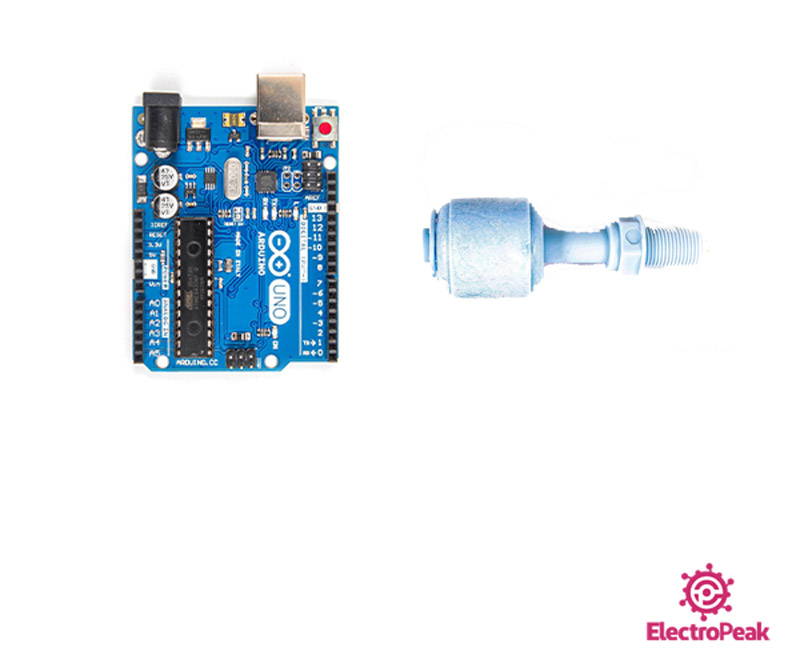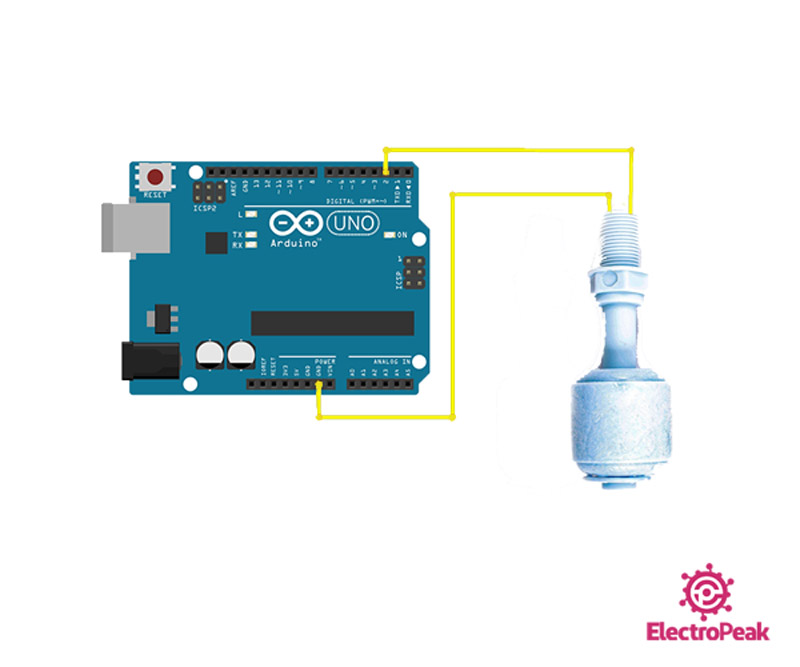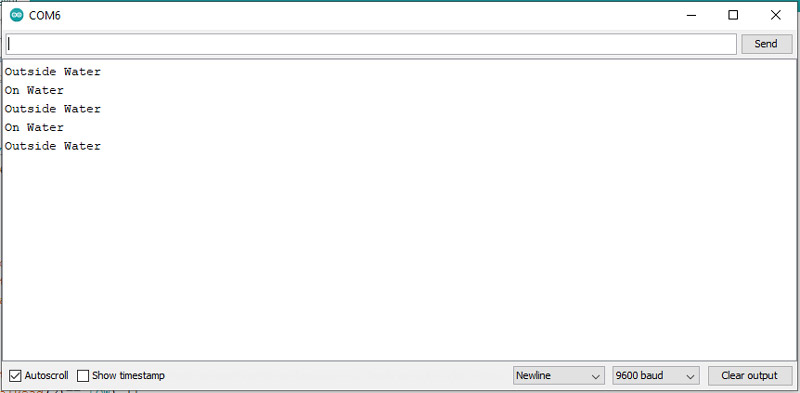Liquid Level Float Switch Features
The liquid level float switch is a very simple sensor that works like a switch. This sensor places vertically, floating on water. The float is located on a pipe that can move on the liquid surface. It works based on the magnetic field.
Note
Until you have not placed the sensor on the liquid surface, the switch is closed and when the sensor is placed on the liquid, the float moves on the pipe and goes up and the switch remains open.
Liquid Level Float Switch Pinout
The liquid level float switch has two wires that two switch ends are inside it. When it is on the surface of the water it is open and otherwise it is closed.
Required Materials
Hardware Components
Software Apps
Interfacing Liquid Level Float Switch with Arduino
Step 1: Circuit
The following circuit shows how you should connect Arduino to the float switch. Connect wires accordingly.
Note
We use the Arduino internal resistor to pull-up the switch.
Step 2: Code
Upload the following code to Arduino.
/*
Liquid Level Float Switch
made on 13 oct 2020
by Amir Mohammad Shojaee @ Electropeak
Home
*/
void setup() {
pinMode(2,INPUT_PULLUP);
Serial.begin(9600);
}
void loop() {
if(digitalRead(2)== HIGH){
Serial.println("On Water");
while(digitalRead(2)== HIGH) {}
delay(100);
}
else{
Serial.println("Outside Water");
while(digitalRead(2)== LOW) {}
delay(100);
}
}
We first set Pin 2 as Input Pull-Up. The phrase “On Water” is displayed when the float is on water (i.e. the switch is open and connected to the Vcc) and the phrase “Outside Water” is displayed when it is not on the water.
The output is as follows.





